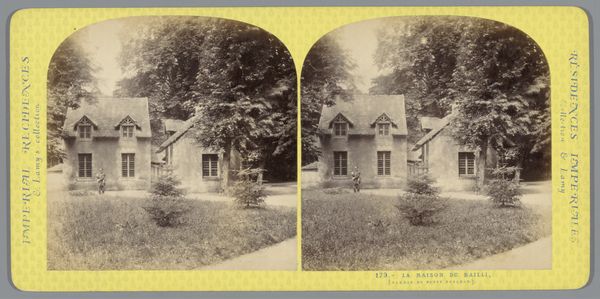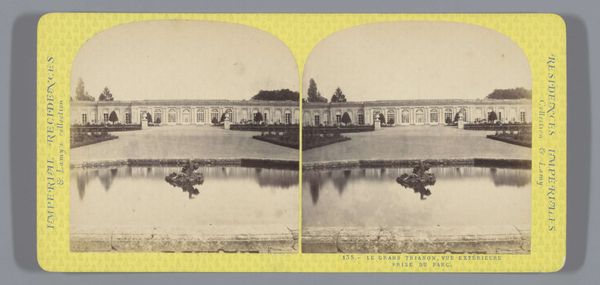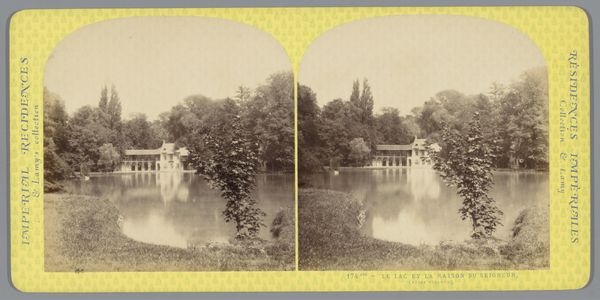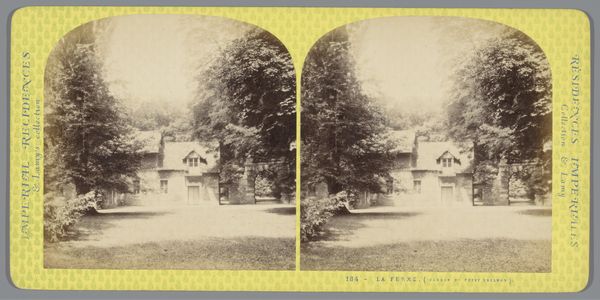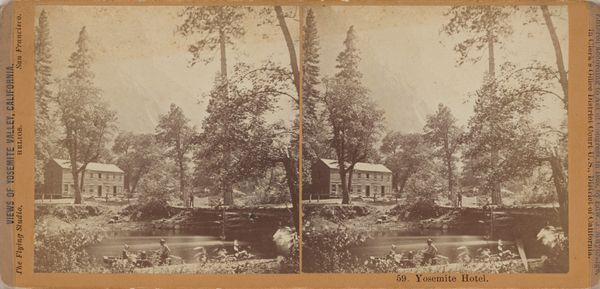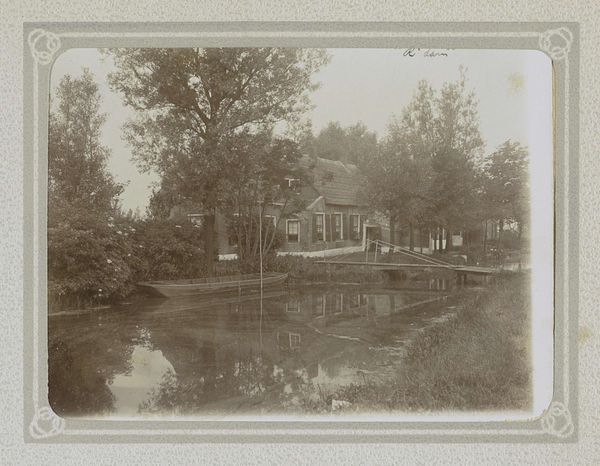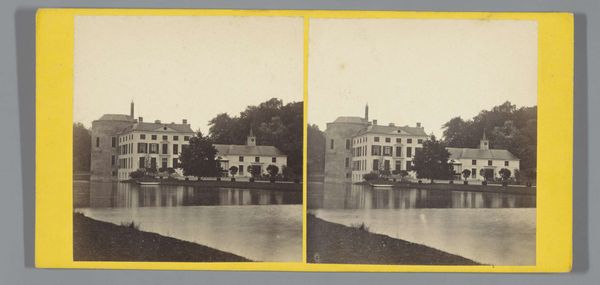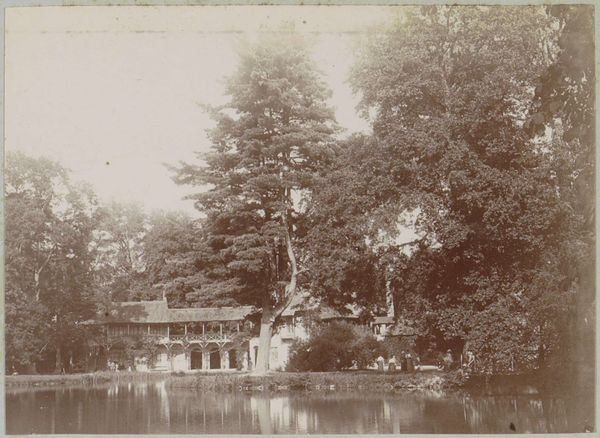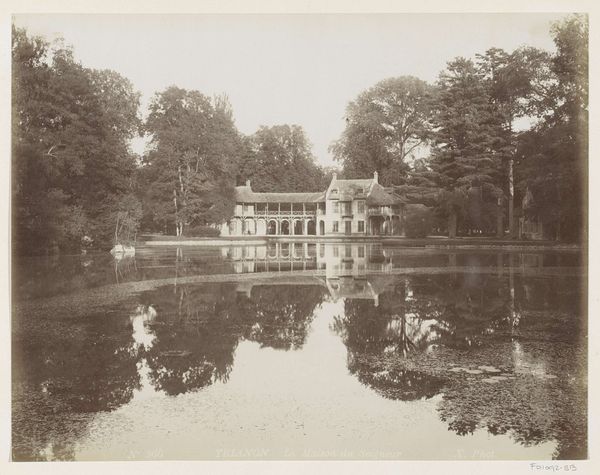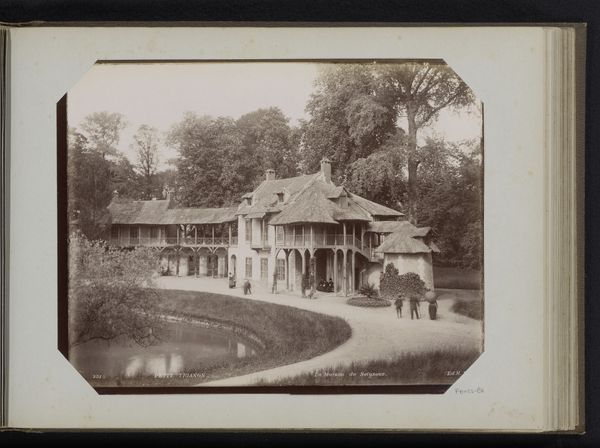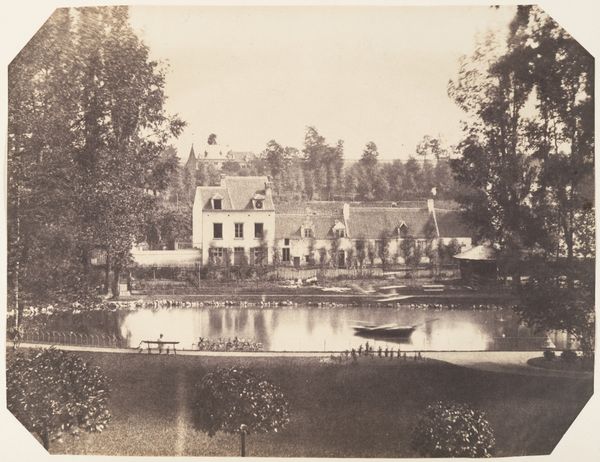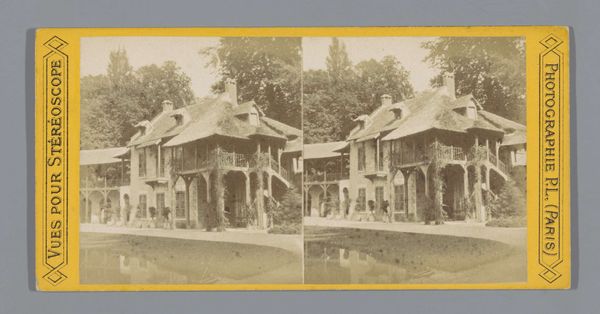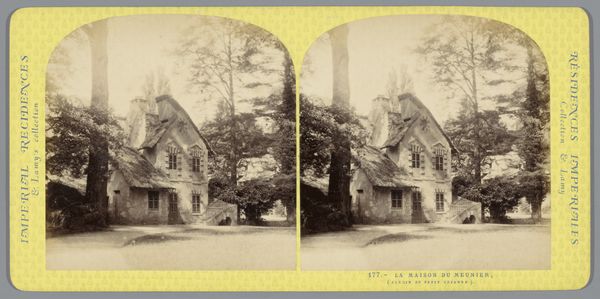
Maison de la reine in Le Hameau de la Reine bij het Petit Trianon 1860 - 1880
0:00
0:00
photography, albumen-print, architecture
#
landscape
#
photography
#
albumen-print
#
architecture
Dimensions: height 87 mm, width 178 mm
Copyright: Rijks Museum: Open Domain
Curator: So ethereal… This image practically hums with quiet, doesn't it? Editor: Indeed. What we’re looking at is an albumen print dating from 1860 to 1880. The photograph, titled "Maison de la reine in Le Hameau de la Reine bij het Petit Trianon", is attributed to Ernest Eléonor Pierre Lamy, focusing on the architecture nestled within the landscape. Curator: Lamy has truly captured a suspended moment. The light shimmering on the water... it feels almost ghostly. Was that intended, or an accident of the process, do you think? Editor: Well, the albumen process, with its reliance on coating paper with egg whites, could be unpredictable. You’re seeing both the possibilities and the limitations of photography in this era. Imperfections weren't necessarily perceived as flaws but embraced as part of the medium. Curator: So it’s less about precise replication and more about impression? The light, for instance, reflecting off the water almost abstracts the building—turning it into a mirage. It makes me consider the labor involved – literally eggs, light and time. Did the Hameau de la Reine itself contribute to this pastoral ideal, masking royal indulgence within a manufactured simplicity? Editor: Exactly! Marie Antoinette commissioned Le Hameau as a retreat, a curated "rustic village" where she and her court could play at being peasants. Consider the materiality and performance implicit here: Architecture constructed to *look* rustic is photographed, and then materially reproduced. Curator: A fiction layered upon a fiction. And here we are, further down the line, encountering yet another iteration of that original…artifice? Editor: Precisely! These photos were often sold as souvenirs, commodifying that experience. Think of the networks of labor to extract materials to fabricate this architectural set, photograph and reproduce it so many times in a growing society in search of aestheticized entertainment. Curator: Almost sad, when you consider the disconnect – a leisure born of tremendous disparity. Yet, undeniably beautiful. It speaks to how aesthetics are entangled with both power and fantasy. Editor: Definitely food for thought! Next time we find ourselves wandering through such idealized landscapes, perhaps we should ask, "What are the hands that made this, and for whose pleasure?" Curator: Or better yet – what is left unsaid? Thank you!
Comments
No comments
Be the first to comment and join the conversation on the ultimate creative platform.
